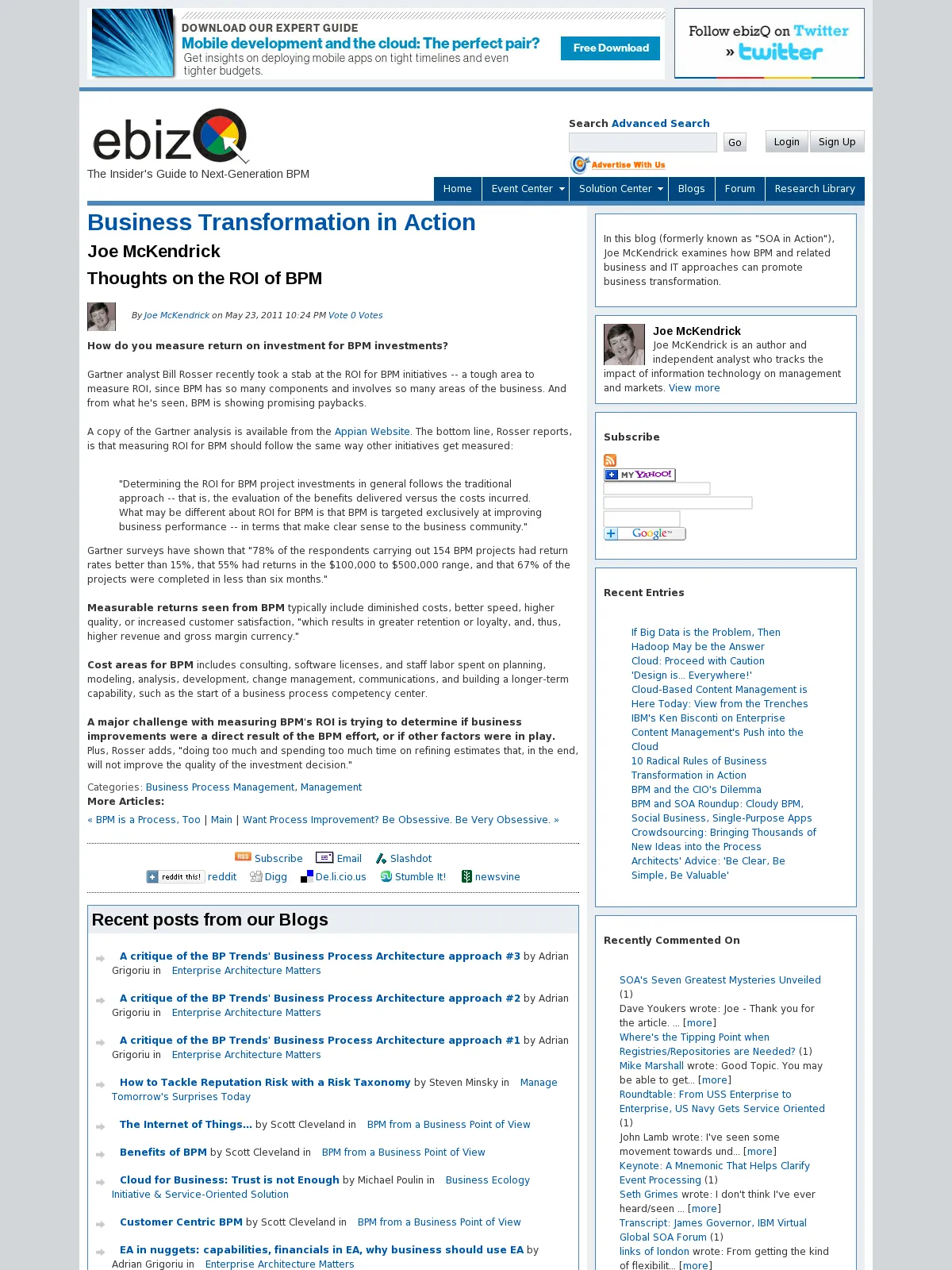Thoughts on the ROI of BPM
How do you measure return on investment for BPM investments?
Gartner analyst Bill Rosser recently took a stab at the ROI for BPM initiatives -- a tough area to measure ROI, since BPM has so many components and involves so many areas of the business. And from what he's seen, BPM is showing promising paybacks.
A copy of the Gartner analysis is available from the Appian Website. The bottom line, Rosser reports, is that measuring ROI for BPM should follow the same way other initiatives get measured:
Measurable returns seen from BPM typically include diminished costs, better speed, higher quality, or increased customer satisfaction, "which results in greater retention or loyalty, and, thus, higher revenue and gross margin currency."
Cost areas for BPM includes consulting, software licenses, and staff labor spent on planning, modeling, analysis, development, change management, communications, and building a longer-term capability, such as the start of a business process competency center.
A major challenge with measuring BPM's ROI is trying to determine if business improvements were a direct result of the BPM effort, or if other factors were in play. Plus, Rosser adds, "doing too much and spending too much time on refining estimates that, in the end, will not improve the quality of the investment decision."
Gartner analyst Bill Rosser recently took a stab at the ROI for BPM initiatives -- a tough area to measure ROI, since BPM has so many components and involves so many areas of the business. And from what he's seen, BPM is showing promising paybacks.
A copy of the Gartner analysis is available from the Appian Website. The bottom line, Rosser reports, is that measuring ROI for BPM should follow the same way other initiatives get measured:
"Determining the ROI for BPM project investments in general follows the traditional approach -- that is, the evaluation of the benefits delivered versus the costs incurred. What may be different about ROI for BPM is that BPM is targeted exclusively at improving business performance -- in terms that make clear sense to the business community."Gartner surveys have shown that "78% of the respondents carrying out 154 BPM projects had return rates better than 15%, that 55% had returns in the $100,000 to $500,000 range, and that 67% of the projects were completed in less than six months."
Measurable returns seen from BPM typically include diminished costs, better speed, higher quality, or increased customer satisfaction, "which results in greater retention or loyalty, and, thus, higher revenue and gross margin currency."
Cost areas for BPM includes consulting, software licenses, and staff labor spent on planning, modeling, analysis, development, change management, communications, and building a longer-term capability, such as the start of a business process competency center.
A major challenge with measuring BPM's ROI is trying to determine if business improvements were a direct result of the BPM effort, or if other factors were in play. Plus, Rosser adds, "doing too much and spending too much time on refining estimates that, in the end, will not improve the quality of the investment decision."
